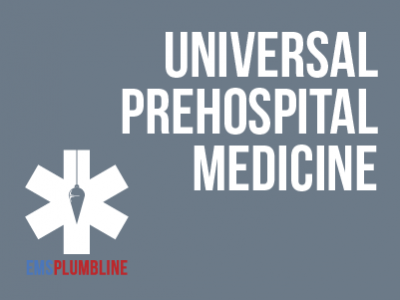 |
Communications for EMS Providers |
1.00 |
Many providers view EMS Communications as the most basic of topics. At the same time, some experienced providers see this as one of the most in-depth issues that they may come across. How do you view the topic of EMS Communications? It is difficult to find a provider with a rich background in EMS Communications that John Merklinger brings to the table. His knowledge of the industry and his ability to breakdown complex issues makes this large topic very easy to digest.
Final Exam: This multiple-choice exam is designed to test your knowledge of the material you just reviewed. You have two attempts to gain an 70% or higher on this exam. Please take your time and answer each question carefully. |
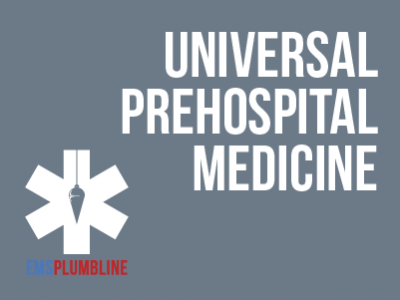 |
Review of Resuscitation |
1.50 |
Dr. Erik Rueckmann and Paramedic Sal Valdez sit down with Paramedic Michael Hoskins in this insightful interview. Their discussion will lead you through the concepts of resuscitation and the teamwork that is inherently integrated in the efforts to be successful.
Final Exam: This multiple-choice exam is designed to test your knowledge of the material you just reviewed. You have two attempts to gain an 70% or higher on this exam. Please take your time and answer each question carefully. |
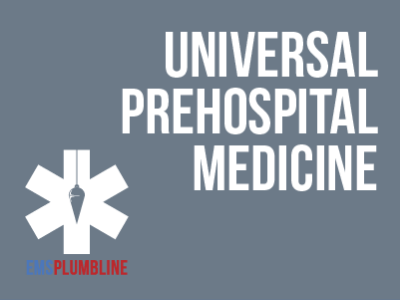 |
Brick by Brick: Trauma Transport Decisions 1—Receiving Facilities |
1.00 |
|
 |
Employee Performance: Feedback (Instructor Guide) |
1.67 |
Giving feedback facilitates organizational growth and development. Feedback helps improve job performance while promoting professional and personal growth in employees.
Managers who know how to give feedback allow employees to advance themselves and grow as individuals and workers. Through proper guidance, employees acquire the necessary skills to meet their job requirements. Feedback helps build interpersonal relationships between managers and employees, while improving their self-esteem and job satisfaction.
In this course you will learn to: identify the focus of feedback, and give and receive feedback effectively, provide positive and constructive feedback, monitor performance after providing feedback, identify communication styles, and manage difficult feedback sessions, and identify when to avoid giving feedback.
This Instructor's Edition of this course includes notes and suggestions to assist you in presenting the material, whether in an in-person classroom setting, or as an instructor-led online or distance-learning course. It also provides you with the answers to questions found in mid-lesson activities, as well as in the quiz that concludes the course. |
 |
Creating and Maintaining Healthy and Safe School Environments |
1.00 |
Keeping school-age children healthy and safe is a major priority for schools. This requires careful attention to setting up the environment to promote healthy habits and using effective strategies for monitoring and maintaining a hygienic environment. It also requires setting up the classroom environment to promote safety and using effective strategies for monitoring and maintaining a safe environment. Because students are growing towards independence, it is also essential to help them develop habits and behaviors for living a healthy lifestyle and to help keep them safe from harm as they participate in school experiences. |
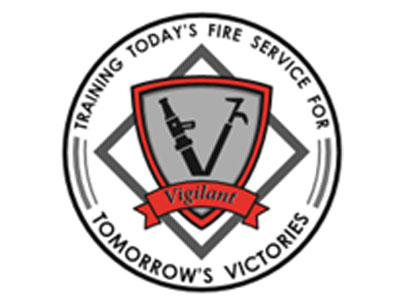 |
SCBA Review #1951 (Instructor Guide) |
1.00 |
This is the Instructor Guide for Lesson #1951 SCBA Review. This Instructor Guide is intended to prepare a lead instructor to deliver this course curriculum. Included in this guide is a review of lesson content, instructions for conducting the lesson skill activity and all required lesson materials. The lead instructor must pass this instructor guide course with a minimum score of 80% to receive the course materials for this lesson. |
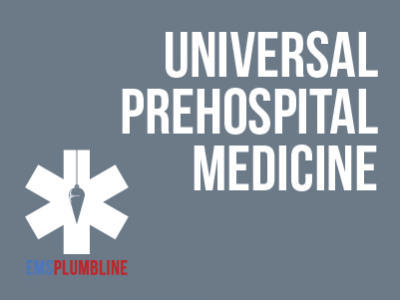 |
Framing: Interviewing a Flight Medic |
1.00 |
The advent of Helicopter Emergency Medical Services (HEMS) has opened the door for care that is often superior to what can be done on the ground. Most providers will look to the speed of transport as the benefit that a helicopter can offer. This lesson is designed to allow the Ground Emergency Medical Service (GEMS) Provider a chance to think differently about HEMS. This interview sheds some light on how just one Flight Medic approaches her job. This enlightening talk will offer a GEMS provider the opportunity to value not just what HEMS can do for the patient but gain some insight as to how the people on the aircraft can make a difference to the persons in need of assistance. Final Exam: This multiple choice exam is designed to test your knowledge of the material you just reviewed. You have TWO attempts to gain a 70% or higher on this exam. Please take your time and answer each question carefully. |
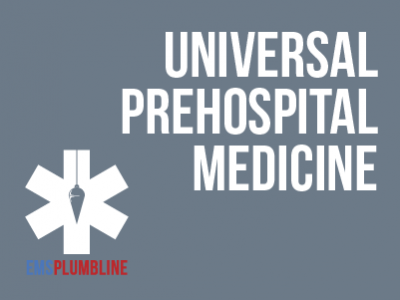 |
Framing: Toxic Inhalations at Structure Fires |
1.00 |
In this brief overview, we discuss the topic of smoke inhalation as it relates to what may occur during a typical structure fire. The emphasis of this lesson will be CO and Cyanide. These are two of the most common toxic inhalation hazards that EMS providers will encounter when treating those that are exposed. Final Exam: This multiple-choice exam is designed to test your knowledge of the material you just reviewed. You have two attempts to gain an 70% or higher on this exam. Please take your time and answer each question carefully. |
 |
Brick by Brick: Gastroenterology Overview—Part 1 |
1.50 |
In most EMS systems, gastroenterology education is avoided at the BLS level. However, prehospital providers frequently respond to reports of nausea, abdominal discomfort, or pain. There is often a disparity in the relationship between the frequency of responses and the amount of education available to EMS providers.
Melodie Kolmetz, Paramedic, PA-C, is a multi-disciplinary provider and educator. She brings her experience as a paramedic, physician assistant, and university professor to this prerequisite course. Her review of the anatomy and physiology of the gastrointestinal and genitourinary tracts offers a better understanding of how to identify life-threatening emergencies. The end result will be better choices when determining the appropriate prehospital interventions and the nearest appropriate transport destination.
Final Exam: Please read each question carefully. You will have two attempts to gain a 70% or higher on this exam. If you are not successful in two attempts, you are welcome to take the course again to gain the certification. |
 |
Brick by Brick: Gastroenterology Overview—Part 2 |
1.50 |
Melodie Kolmetz, Paramedic, PA-C, is a multi-disciplinary provider and educator. Her lesson continues with an overview on completing a physical exam. Melodie's experience as a paramedic, physician assistant, and instructor offers an opportunity to learn from one of the best in the industry.
Final Exam: Please read each question carefully. You will have two attempts to gain a 70% or higher on this exam. If you are not successful in two attempts, you are welcome to take the course again to gain the certification. |
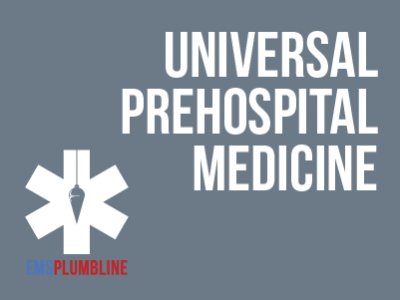 |
Framing: Child Maltreatment for EMS Providers |
1.00 |
Child Abuse Pediatrician Dr. E. Murray discusses some of the key issues that EMS providers must consider when caring for abused children. Final Exam: This multiple-choice exam is designed to test your knowledge of the material you just reviewed. You have two attempts to gain an 70% or higher on this exam. Please take your time and answer each question carefully. |
 |
Employee Performance: Conflicts (Instructor Guide) |
0.67 |
In any organization, there are individuals with unique personalities and responsibilities. Conflicts are an inevitable part of employee interaction. Knowing how to resolve conflicts when they arise is vital to the well-being of any company.
In this course you will learn to: identify common myths associated with workplace conflicts, common reasons that conflicts arise, and types of workplace conflict, and distinguish between conflict management and conflict resolution.
This Instructor's Edition of this course includes notes and suggestions to assist you in presenting the material, whether in an in-person classroom setting, or as an instructor-led online or distance-learning course. It also provides you with the answers to questions found in mid-lesson activities, as well as in the quiz that concludes the course. |
 |
Human Relations Skill Development: Leadership Styles and Conflict Management for Paraprofessionals |
1.50 |
Research indicates that those in positions of leadership use a variety of different leadership and management styles. A person’s effectiveness as a leader is often directly linked to their leadership style. It is important for paraprofessionals to be aware of the assumptions and characteristics of different leadership styles. Knowledge of different leadership styles can help paraprofessionals reflect on their own leadership style, and assess its effectiveness. It can also help paraprofessionals take a proactive approach to applying different leadership styles and techniques, depending on the situation.
Leaders also use a variety of different styles when it comes to managing and resolving conflicts. By understanding how to diagnose the causes and dynamics of conflict, and understanding the characteristics of different conflict management styles, paraprofessionals can choose the best conflict management strategy for each situation. |
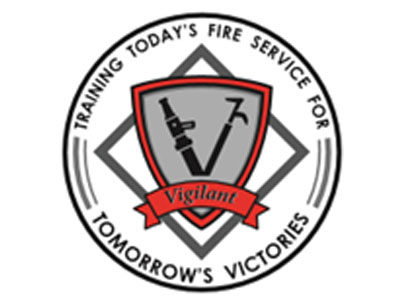 |
Strategy Tactic Task #1431a (Instructor Guide) |
1.00 |
This is the Instructor Guide for Lesson #1431a Strategy Tactic Task. This instructor guide provides the instructor with lesson background, key points, and delivery methods. Required lesson materials including lesson plan, presentation, and evaluation quiz with answer key. Included in this guide is an explanation video of the presentation that describes each slide of the lesson. |
 |
Framing: Documentation-Proper and Complete |
1.00 |
Your local training director, operations officers, and medical direction have expectations that should be met for each and every documentation piece that you provide. It is our intention to provide you with knowledge on this subject that will spark good discussion and hopefully a better overall product for you and your service. |
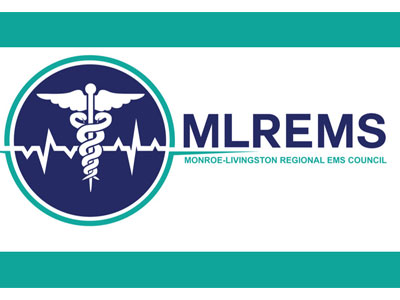 |
Constructing: FAST-ED Overview |
1.00 |
Professor of Emergency Medicine and Chief of the Division of Prehospital Medicine at the University of Rochester, Jeremy Cushman, brings his experienced team of prehospital providers together to discuss the benefits of Field Assessment Stroke Triage for Emergency Destination (FAST-ED). You will want to take notes and download your favorite smartphone app. This lesson is sure to spark an excellent discussion with your training officers and/or medical director(s).
Final Exam: This multiple choice exam is designed to test your knowledge of the material you just reviewed. You have two attempts to gain an 80% or higher on this exam. Please utilize the smartphone app of your choosing and take your time and answer each question carefully. |
 |
Brick by Brick: Edibles and Legalization-Part 1 |
1.00 |
In the Fall of 2021, EMT Conner Griffin sat down with Monroe Livingston County's Medical Director, Jeremy Cushman, and Dr. Nicholas Nacca. Dr. Nacca brings a unique set of skills to the first lesson in this series. His experience as an Emergency Medicine Physician and a Toxicologist is evident. They discuss the medical aspects of potent edibles and how legalization offers new challenges to prehospital medicine. You will want to listen to this lesson and return for more as this topic evolves.
Final Exam: This multiple choice exam is designed to test your knowledge of the material you just reviewed. You have two attempts to gain a 70% or higher on this exam. Please take your time and answer each question carefully. |
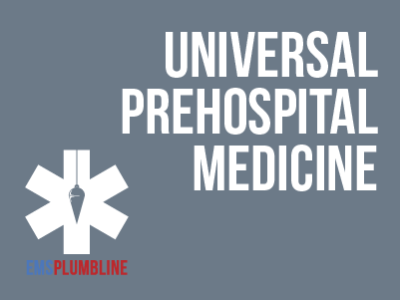 |
End-of-Life Care (Part 1): Introduction—Palliative Care |
1.00 |
Nursing educator Dr. Jacqueline Coates, DNP, MS, RN, FNP-C, is a retired paramedic who brings her experiences in prehospital medicine and hospice to this introductory lesson in palliative care. The series begins by discussing the concepts of hospice and palliative care. Her expertise and teaching acumen provide several opportunities for you and your team to expound upon the principles she introduces.
The multiple-choice exam is designed to test your knowledge of the material you just reviewed. You have two attempts to gain an 80% or higher on this exam. Please take your time and answer each question carefully. |
 |
NYS MOLST Training |
1.50 |
The New York State Medical Orders for Life Sustaining Treatment (MOLST) form contains medical orders that EMS must honor in critically ill and frail patients. In order to honor patient wishes at the end of life, it is essential that EMS clinicians are able to rapidly interpret MOLST forms and honor the orders. In 2023, DOH policy was updated to align with an updated MOLST form and to allow the recognition of health care agents by EMS without online medical oversight. This training reviews the legal roles of health care agents, discusses the purpose of the MOLST form, how to interpret orders and reviews five scenarios that will give you the confidence to interpret and honor MOLST orders when it matters most. |
 |
Quality Management: Preparing to Change Processes (Instructor Guide) |
0.75 |
Business process improvement is a basic managerial responsibility. Just as managers are responsible for employee performance appraisals and budgeting, they are also responsible for making continual improvements in their division or department.
Because improving business processes is an ongoing effort, management needs to control and coordinate processes to ensure their success. In addition, employees who are affected by improvement changes need active support from management.
In this course you will learn to: identify management goals in preparation to lead business process improvement, as well as plan improvements.
This Instructor's Edition of this course includes notes and suggestions to assist you in presenting the material, whether in an in-person classroom setting or as an instructor-led online or distance-learning course. It also provides you with the answers to questions found in mid-lesson activities, as well as in the quiz that concludes the course. |
 |
Business Problem Solving: Critical Thinking and Information Analysis (Instructor Guide) |
1.34 |
Critical thinking is the ability to understand how others think as well as how your own thinking process works. It also includes the ability to objectively evaluate the evidence used to support beliefs or arguments that lead to conclusions. It is an important business and problem-solving skill. Critical thinking helps you to evaluate various methods of reasoning that can be used in problem solving.
In this course you will learn to: use reasoning and logic to think critically, define and use quantitative analysis techniques, and define and use qualitative analysis techniques.
This Instructor's Edition of this course includes notes and suggestions to assist you in presenting the material, whether in an in-person classroom setting or as an instructor-led online or distance-learning course. It also provides you with the answers to questions found in mid-lesson activities, as well as in the quiz that concludes the course. |
 |
Paraprofessional Math Skills 3: Data Analysis |
1.50 |
This course covers Paraprofessional Math Skills: Data Analysis. It is just one out of three Paraprofessional Math Skills courses, and one out of eight ParaPro prep courses that will prepare you on K-12 math topics. This course will help you develop your knowledge of these mathematical concepts and help you apply them to abstract and real-life situations. After taking these prep courses, you should be better prepared for the ETS ParaPro Assessment. This course can be taken as a stand-alone learning event, as part of a broader paraprofessional curriculum, or in preparation for the ParaPro Assessment.
After completing this course, you will be able to:
Interpret information from tables, charts, and graphs
Interpret trends over time, given a table, chart, or graph with time related data
Create basic tables, charts, and graphs
Compute the mean, median, and mode |
 |
Prehospital Tracheostomy Care for the BLS Provider |
1.00 |
One of the most intimidating events for a BLS provider is the 911 call for a pediatric patient with a difficult airway. Dr. Christopher Harmon and Paramedic Kuo Downing Reese discuss the challenging topic of the emergent airway and tracheostomy management in the prehospital setting.
Final Exam: This multiple-choice exam is designed to test your knowledge of the material you just reviewed. You have two attempts to gain an 80% or higher on this exam. Please take your time and answer each question carefully. |
 |
Building Upward—Primary Assessment |
1.00 |
Course Description: It is often said that experience is the best teacher. Dr. Jack Davidoff is an experienced EMS Medical Director. Paramedic Jason Haag is an experienced fire and EMS provider. The two of them share a few thoughts that prove to be an excellent review of what should and could be done during a standard primary assessment and more. Final Exam: A score of 80% or higher is required to obtain your certificate. You have two attempts to pass this multiple-choice exam. Please take your time to carefully answer each question. |
 |
Asthma Explained for the BLS Provider |
1.50 |
Briefly review some of the most basic concepts of caring for a patient who is suffering from an asthma attack. Final Exam: This multiple-choice exam is designed to test your knowledge of the material you just reviewed. You have two attempts to gain an 80% or higher on this exam. Please take your time and answer each question carefully. |


























